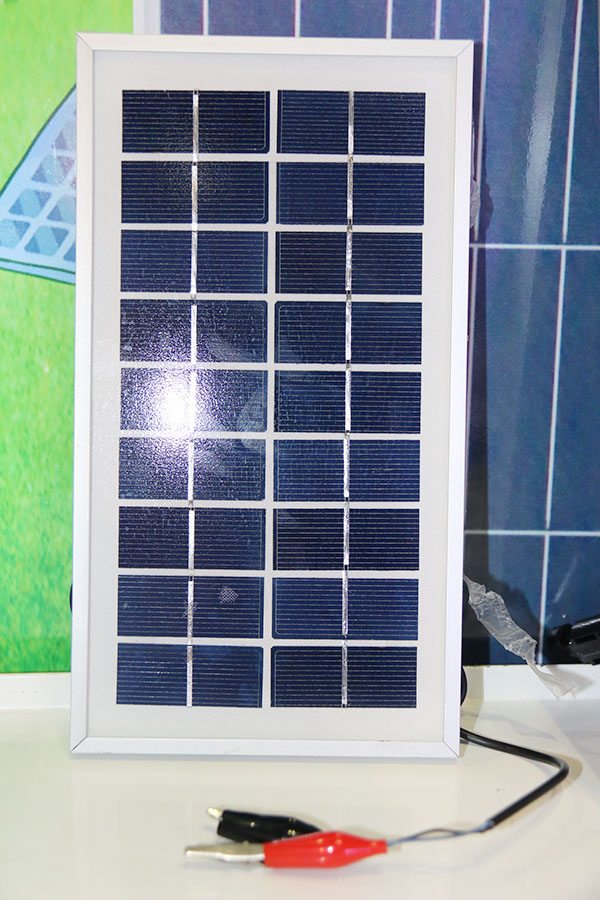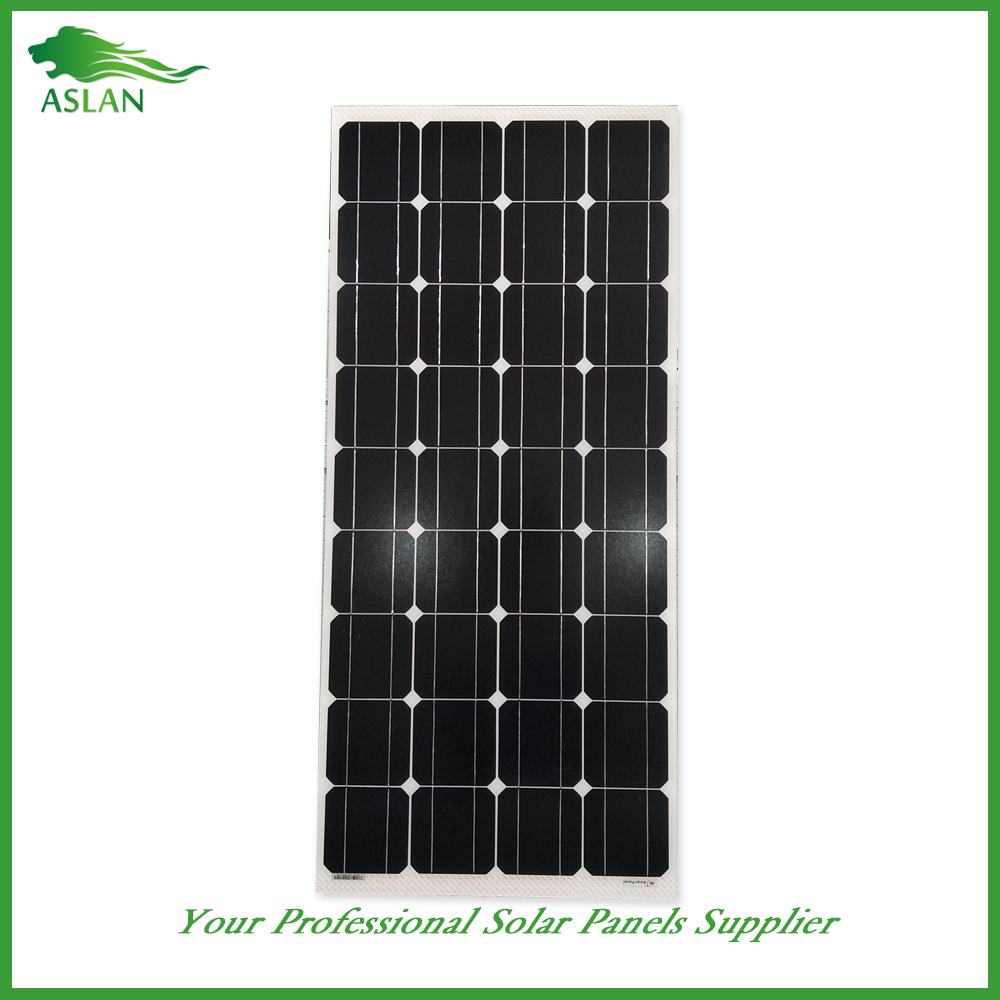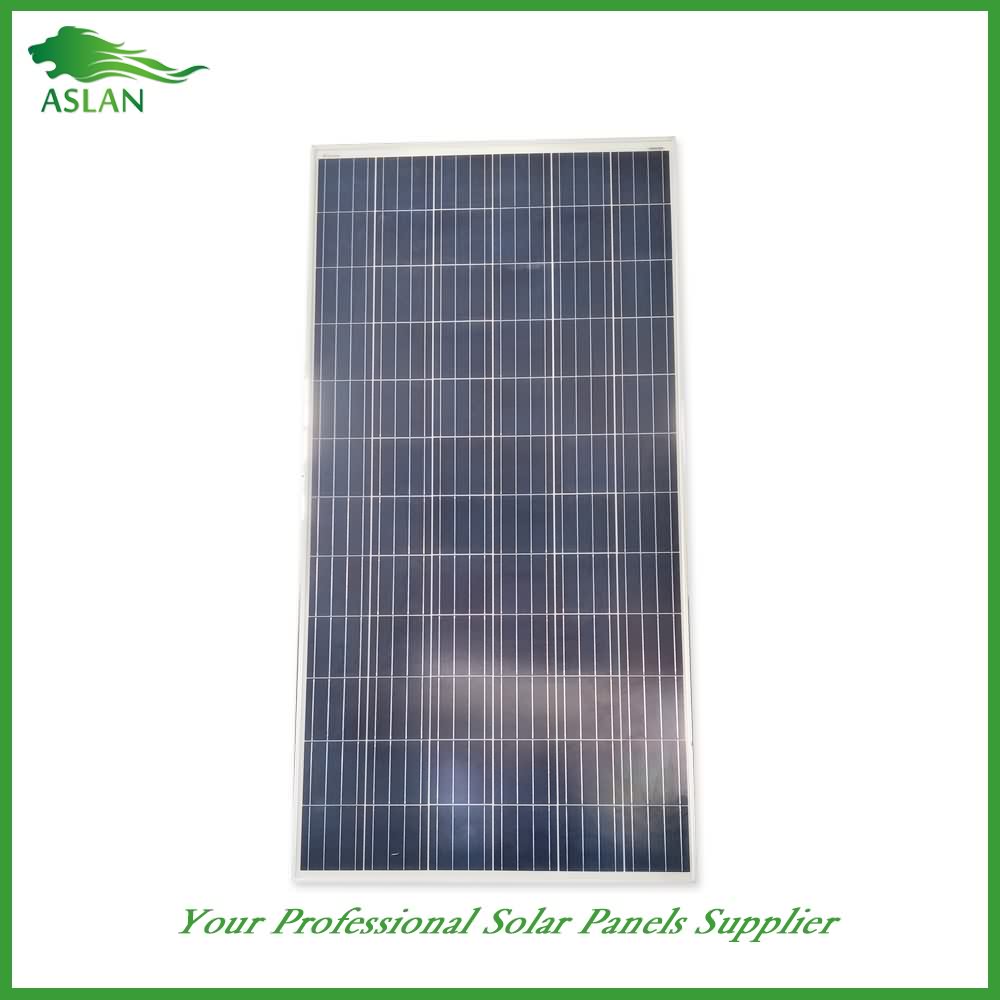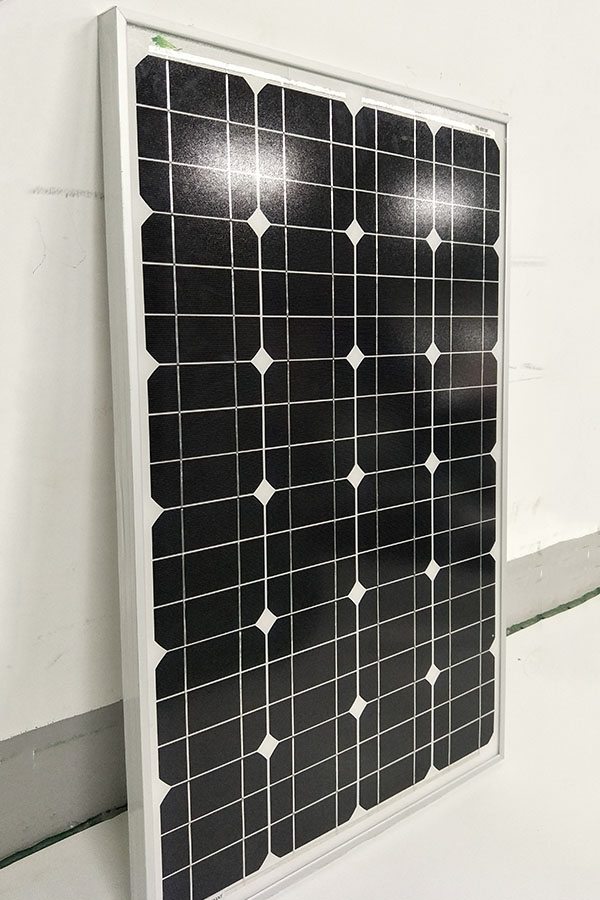High Performance Poly-crystalline Solar Panel 3W Manufacturer in Miami
Short Description:
We are proud of the high customer satisfaction and wide acceptance due to our persistent pursuit of high quality both on product and service for High Performance Poly-crystalline Solar Panel 3W Manufacturer in Miami, Our aim is "blazing new ground, Passing Value", in the future, we sincerely invite you to grow up with us and make a bright future together!
Poly-crystalline Solar Panel 3W
Technical parameter
Maximum Power(W) 3W
Optimum Power Voltage(Vmp) 9V
Optimum Operating Current(Imp) 0.34A
Open Circuit Voltage(Voc) 10.8V
Short Circuit Current(Isc) 0.37A
Mechanical Characteristics
Cell Type Polycrystalline
No of Cell 18 (2x9pcs)
Dimensions 145x245x18mm
Weight 0.52KGS
Front Glass 3.2mm,High Transmission, Low Iron,Tempered Glass
Temperature and Coefficients
Operating Temperature(°C): -40°C ~ + 85°C
Maximum System Voltage: 600V(UL)/1000V(IEC) DC
Maximum Rated Current Series: 10A
Temperature Coefficients of Pmax: -0.435%
Temperature Coefficients of Voc: -0.35%
Temperature Coefficients of Isc: 0.043%
Nominal Operationg Cell Temperature (NOCT): 47+/-2°C
Materials of solar panel
1).Solar Cell——Polycrystalline solar cell 156*156mm
2).Front Glass——-3.2mm, high transmission, low iron, tempered glass
3).EVA——-excellent anti-aging EVA
4).TPT——-TPT hot seal made of flame resistance
5).Frame——anodized aluminum profile
6).Junction Box——-IP65 rated, high quality, with diode protection
Superiority: high quality anodized aluminum frame, high efficiency long life, easy installation, strong wind resistance, strong hail resistance.
Features
1. High cell efficiency with quality silicon materials for long term output stability
2. Strictly quality control ensure the stability and reliability, totally 23 QC procedures
3. High transmittance low iron tempered glass with enhanced stiffness and impact resistance
4. Both Poly-crystalline and Mono-crystalline
5. Excellent performance in harsh weather
6. Outstanding electrical performance under high temperature and low irradiance
Quality assurance testing
Thermal cycling test
Thermal shock test
Thermal/Freezing and high humidity cycling test
Electrical isolation test
Hail impact test
Mechanical, wind and twist loading test
Salt mist test
Light and water-exposure test
Moist carbon dioxide/sulphur dioxide
http://goo.gl/ksd1F
You Save $4,001.10 (20%) Today! Adding solar panels to your home is one of the easiest and most effective ways to go green and reduce your energy bills. Once the Grape Solar Residential Solar Power System Kit is in place, just sit back as the maintenance-free system generates electricity at no additional cost, month by month. This easy to install kit comes complete with 22 solar panels, an inverter, and rooftop rack system. Its array of 230-watt panels generates between 460 and 924 kWh of electricity per month for use in your home. As a bonus, this system is eligible for federal, state, and county incentives and rebates.
Solar King tries to sell The Major some solar panels. The Major has a little fun at Solar King’s expense. Click “Show more” for a quick analysis of Solar King’s sales pitch.
Solar King claim: Energy price is set to rise about 60% in the next few years.
Where on earth does this statistic come from – the Department of Making-it-up-ology at Bogus University? According to the Office for Budget Responsibility in March 2013:
“Rises in retail electricity and gas prices by the major UK energy suppliers at the end of 2012 and beginning of 2013 have now been implemented, with the last occurring on 18 January. Some UK energy suppliers have pointed to increased distribution, network and environmental policy costs as well as wholesale costs.
We expect these environmental policy and network costs to persist in coming years, contributing to rises in domestic gas and electricity prices. Policy costs could account for an average increase of around 2 per cent per annum in retail electricity prices and around 0.5 per cent per annum increases in household gas prices in the years to 2020. Network costs could add a further 2 per cent per annum to domestic energy prices over the next few years. While wholesale energy costs are inherently uncertain, there may also be some further upward pressure from increased wholesale prices in winter 2013 based on the forward prices at the time of producing this forecast.
Overall we assume rises in domestic energy prices of around 7 per cent in winter 2013. We also assume that there is a rise of around 3 per cent towards the end of 2014. This implies that the contribution to CPI inflation from retail energy prices is around 0.3 and 0.1 percentage points in winter 2013 and winter 2014 respectively. However there are uncertainties around these estimates, depending on the pricing strategies used by suppliers and the extent to which these non-wholesale costs may already be factored into current retail prices.”
(Source: PDF pages 73-74, document page numbers 70-71 at http://cdn.budgetresponsibility.independent.gov.uk/March-2013-EFO-44734674673453.pdf)
So, Solar King claims a rise of “about 60 per cent” over the next few years, while the OBR estimates 7 per cent in the 2013 winter, and 3 percent in 2014. It’s a fair assumption that prices will continue to rise in the years ahead, but nobody can predict accurate figures for “the next few years”. Solar King’s numbers far exceed those made by government statisticians. This is a misleading figure.
Claim: a renewable energy system such as Solar will save between 50 and 70 per cent on energy bills every month.
They don’t know what my monthly energy bills are – or how many solar panels would fit on the roof, so they can’t put a figure on how much it will save.
Claim: I will receive a Feed-In Tariff from the Government that may be up to £600 and £700 a year.
It “may” indeed be that amount in the best possible case, but it would depend on the size and position of the solar installation. Also, the payment is not made by the Government but the energy company. Where do the energy companies get that money from? Simple – they increase the cost of everybody’s energy bill (some of the “environmental policy costs” mentioned by the OBR above). So every bill-payer is subsidising this scheme for the lucky few who have solar panels.
http://www.energysavingtrust.org.uk/Generating-energy/Getting-money-back/Feed-In-Tariffs-scheme-FITs
Claim: Barclays will fund the cost of the panels.
This implies the system is free. Whether that includes installation as well is not stated. As Barclays is not a charitable enterprise and has needy shareholders to support, it is unlikely to be giving away free money.
This suggests that what is being offered is a “rent a roof” scheme where the householder benefits from the electricity that is generated during the day, while Solar King and Barclays benefit from the majority of the Feed-In Tariff revenue (passing on a potential £600/700 to the householder). People who organise their own loan to pay for their system outright would probably get a better deal as they would be able to benefit from the whole of the Feed-In Tariff.
Renting the roof may be fine if you plan to stay at the same address for 25 years. But if you have a mortgage, the mortgage company may not be keen. If you need to sell your house, will potential purchasers want a solar company to have a claim on the property?
Further information is available at:
http://conversation.which.co.uk/money/free-solar-panels-rent-a-roof-mortgage-lender-risk/
http://www.which.co.uk/news/2010/09/free-solar-panels-not-such-a-great-deal-231808/
Claim: I must pay £52-£364 in year 1, and £182 in year 2.
Undeniable. Not sure what this payment is for though…
Claim: in year 3 I receive some of the profits.
This implies that I won’t see any of the Feed-In Tariff revenue until the third year of ownership… and that wasn’t mentioned before.





